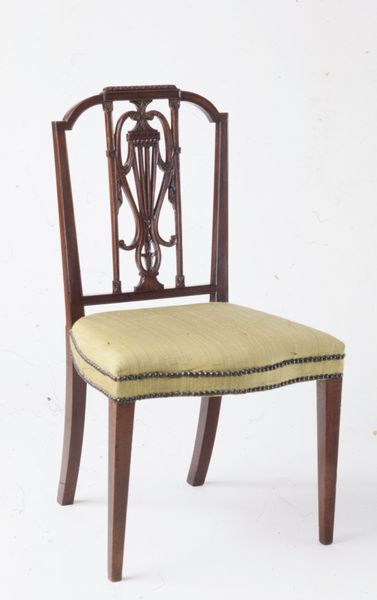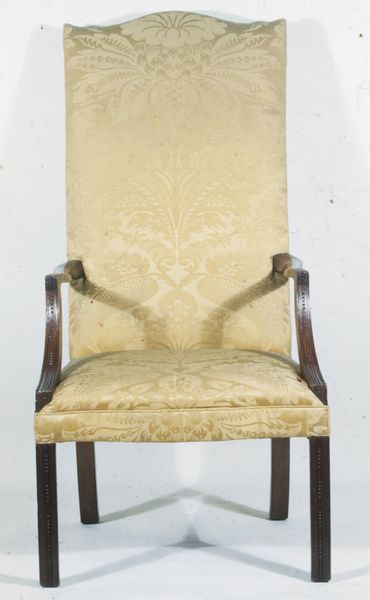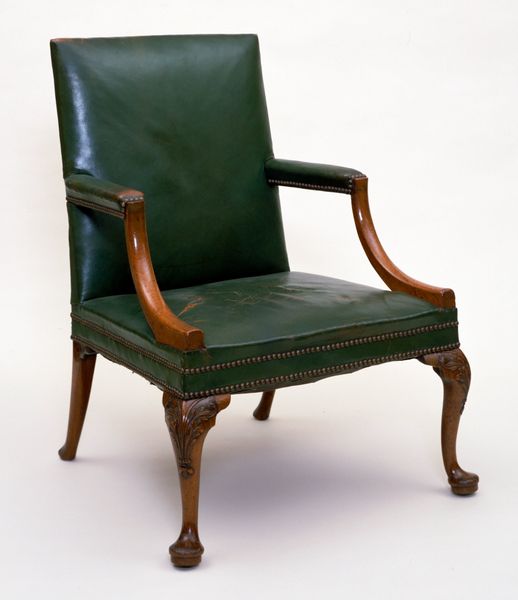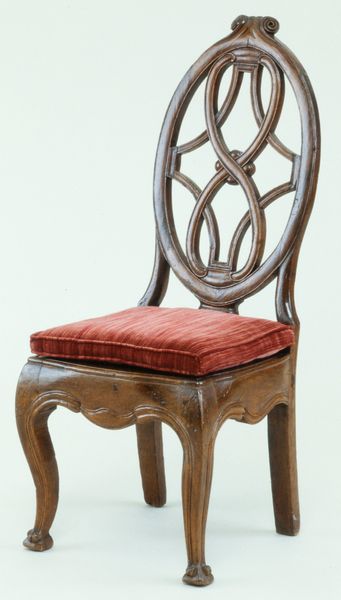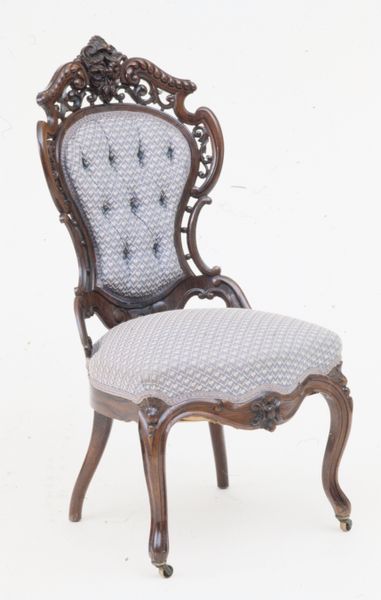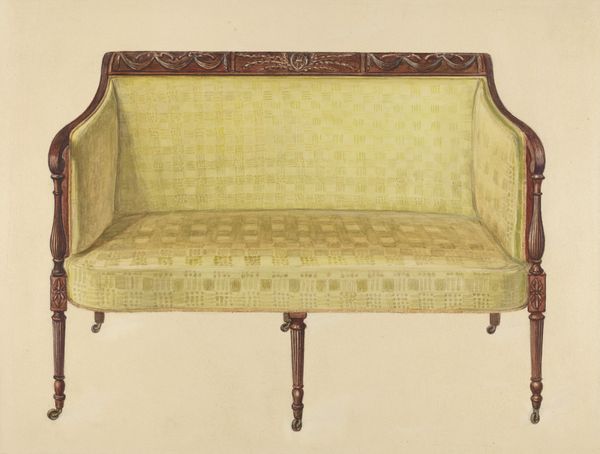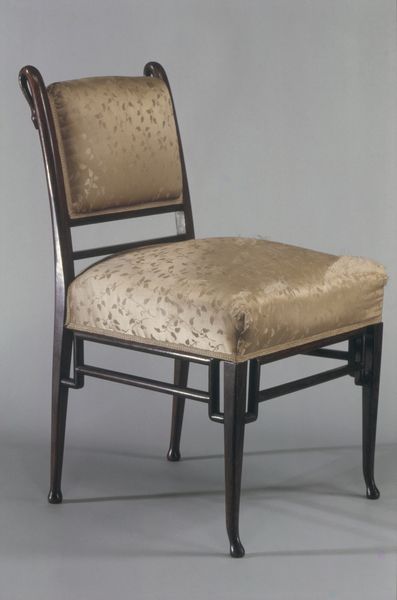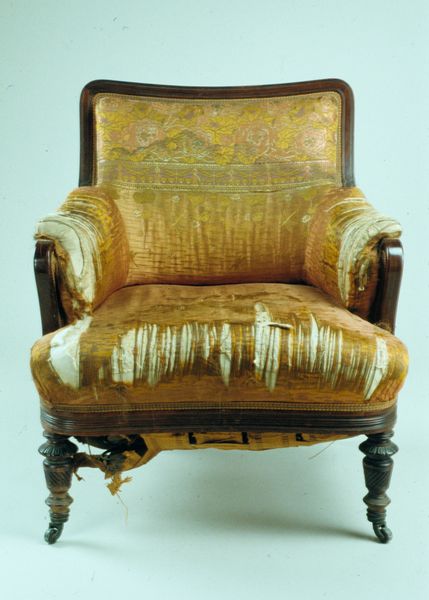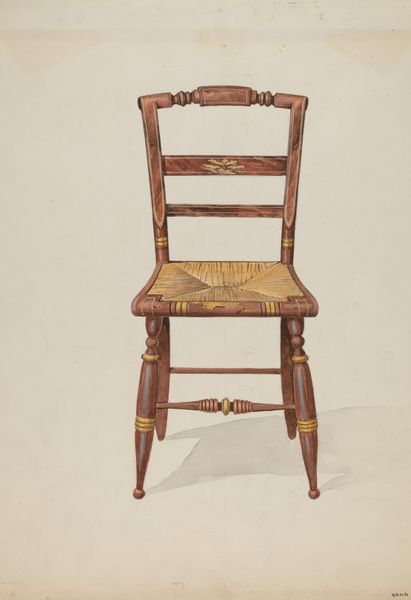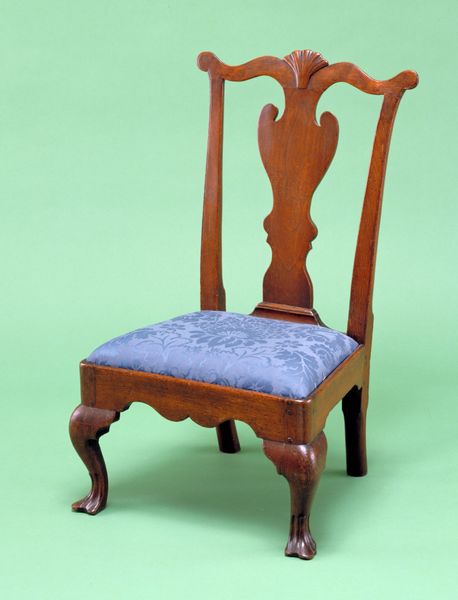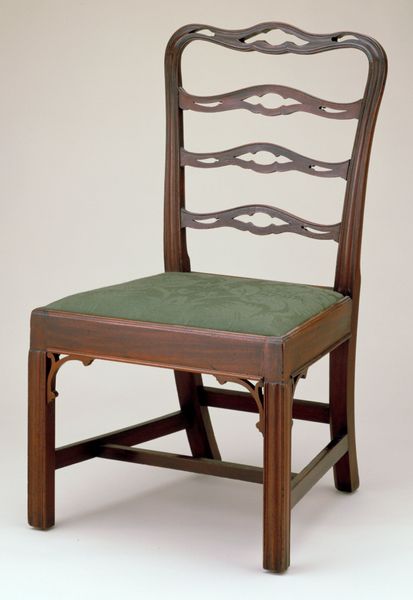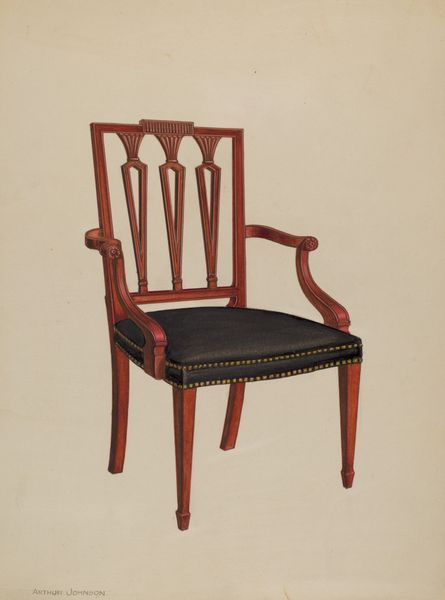
carving, wood
#
neoclacissism
#
carving
#
furniture
#
wood
#
decorative-art
Dimensions: 36 x 20 1/2 x 16 in. (91.4 x 52.1 x 40.6 cm)
Copyright: Public Domain
Editor: This "Side Chair," crafted between 1805 and 1810 by Thomas Seymour and currently residing at the Metropolitan Museum of Art, is remarkably elegant. The clean lines and detailed carving really strike me. What speaks to you most about this piece? Curator: The chair's neoclassical design evokes a particular era, doesn't it? Beyond its surface beauty, what really catches my eye is the symbolism inherent in its form. Consider the diamond pattern in the backrest: Does it recall heraldic emblems, suggesting a connection to lineage and established order? Editor: That's a compelling point. I hadn’t considered heraldry, but now I see how that geometric shape lends an air of sophistication and maybe even status. The choice of wood, too, seems significant. Curator: Precisely! The wood speaks volumes. Do you think it evokes nature? And the craftsmanship suggests a society that valued both utility and artistry, embedding meaning into everyday objects. It also begs the question: how does an object so common elevate beyond simple form to say something profound about society, economics and even philosophy? Editor: It definitely presents an interesting interplay of design, utility, and symbolic meaning. Seeing furniture this way opens up a whole new perspective! Curator: Indeed. We often overlook how furniture acts as a carrier of cultural memory. Thinking through its materials and symbology invites one to reconsider our own modern design choices and how future societies may decode them.
Comments
No comments
Be the first to comment and join the conversation on the ultimate creative platform.
